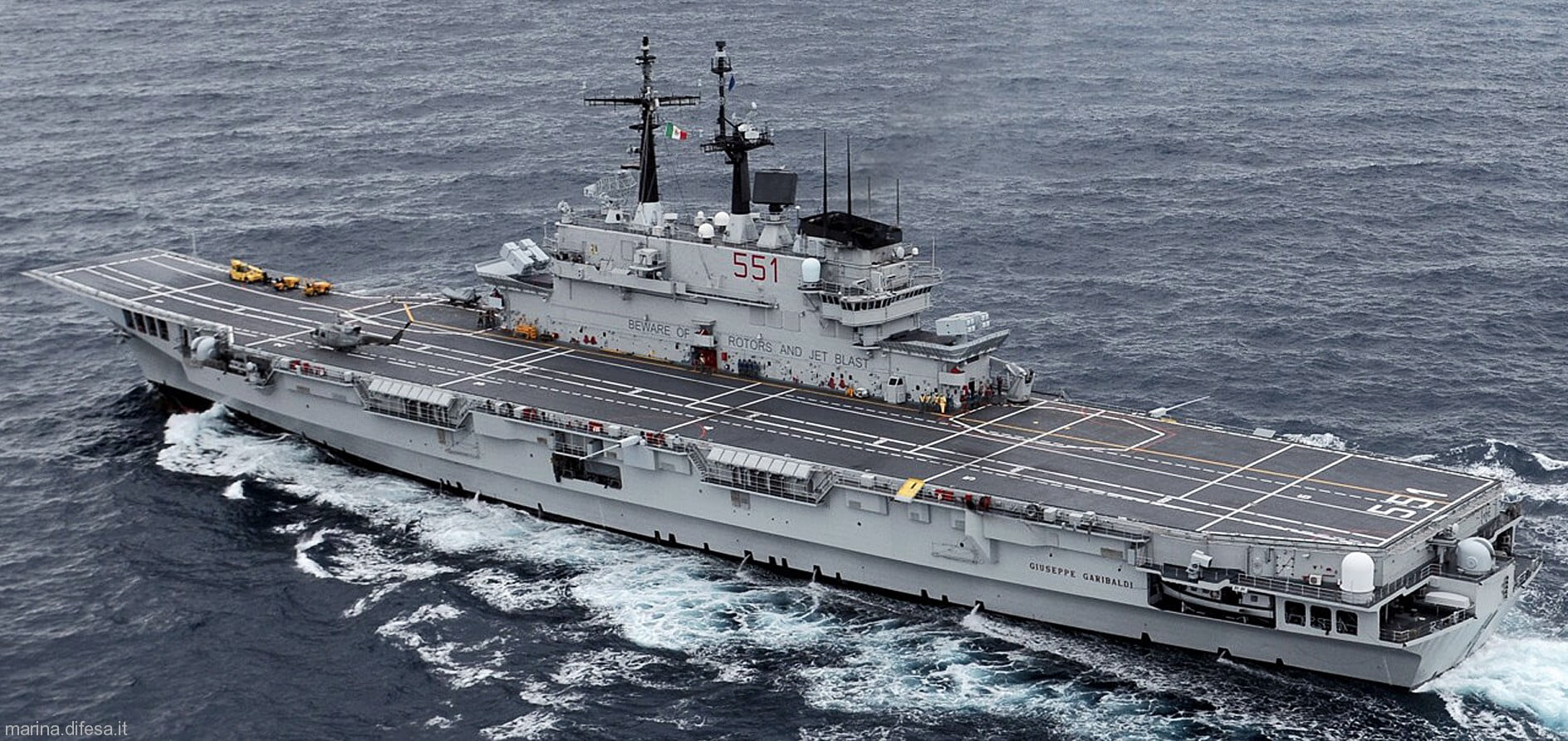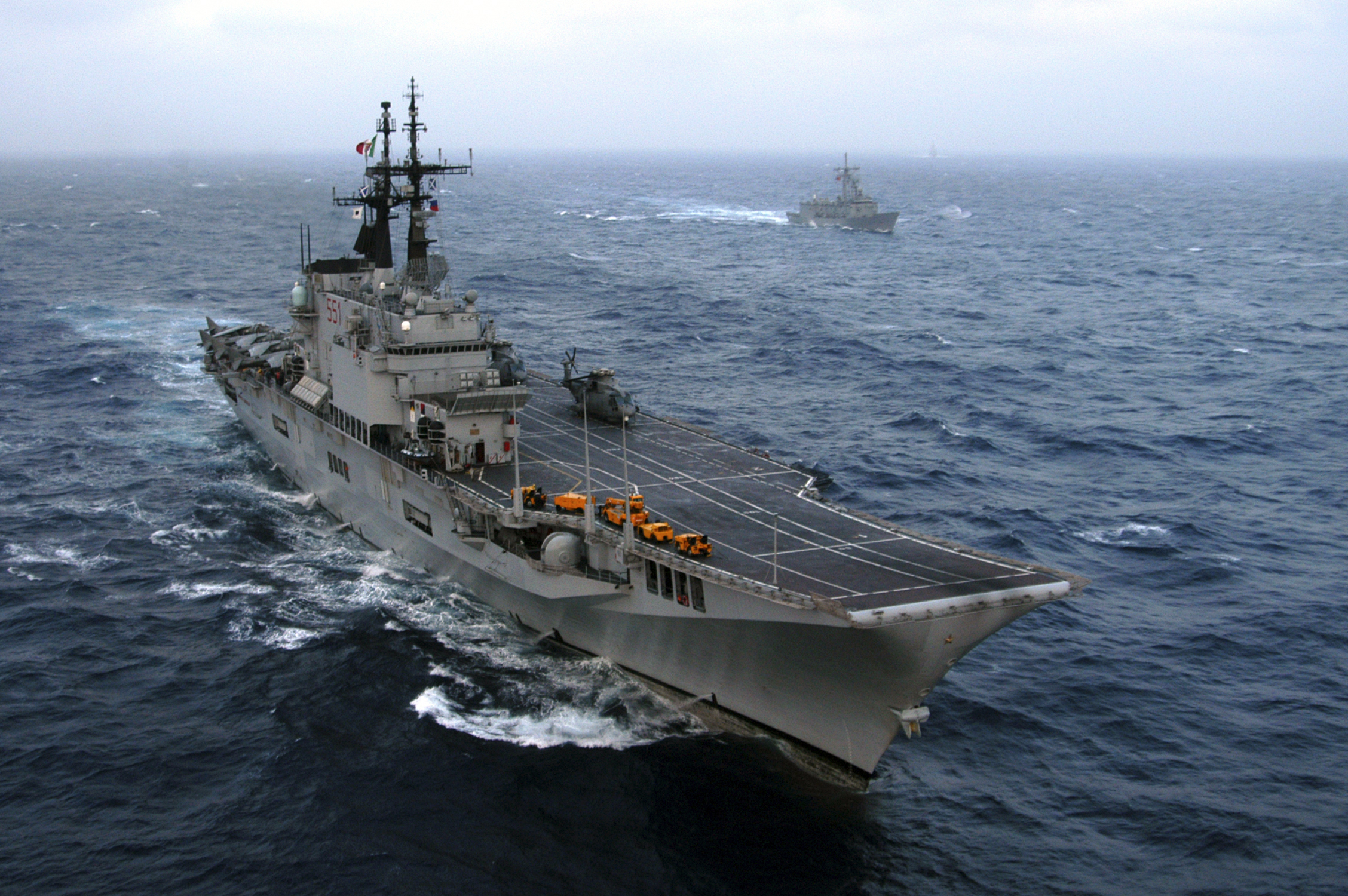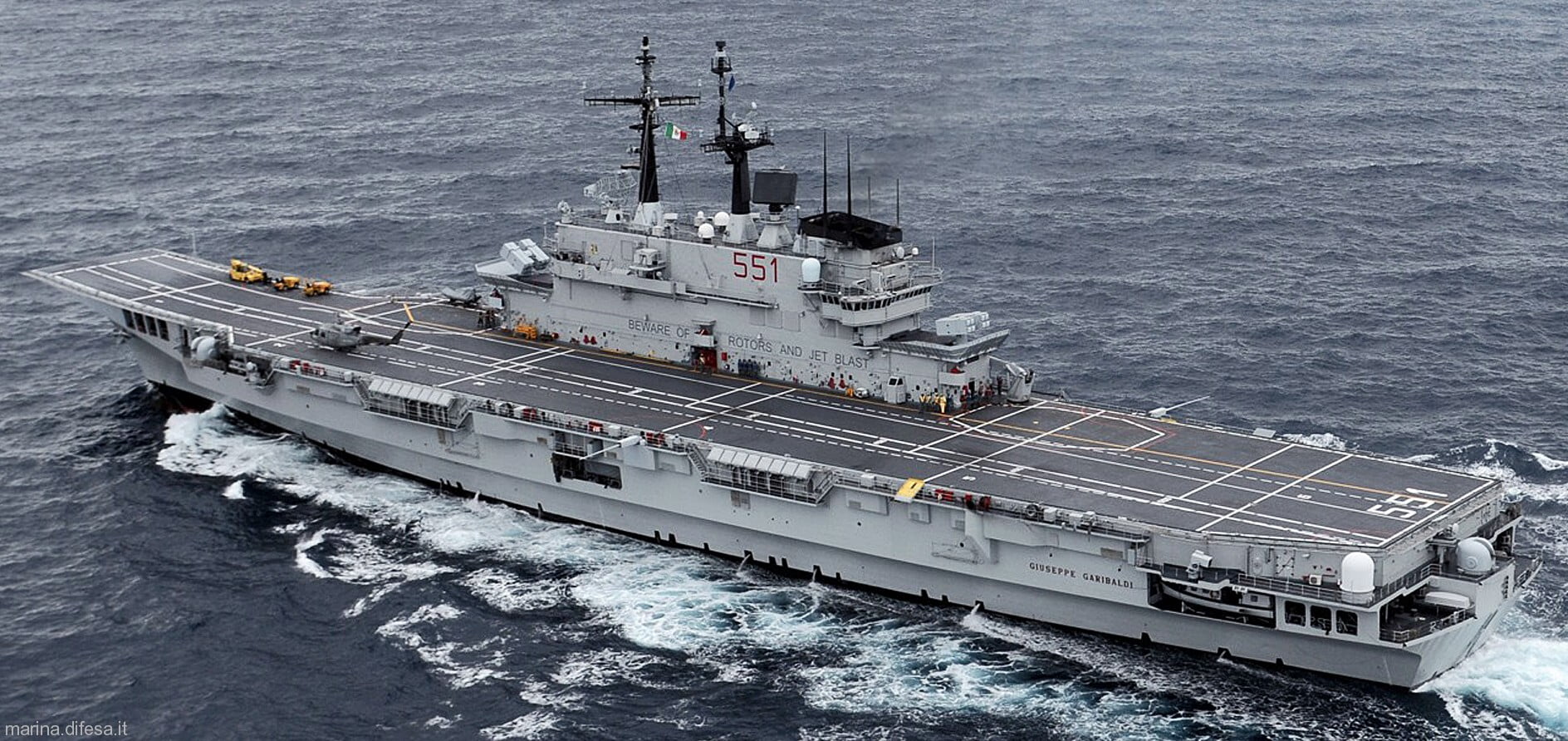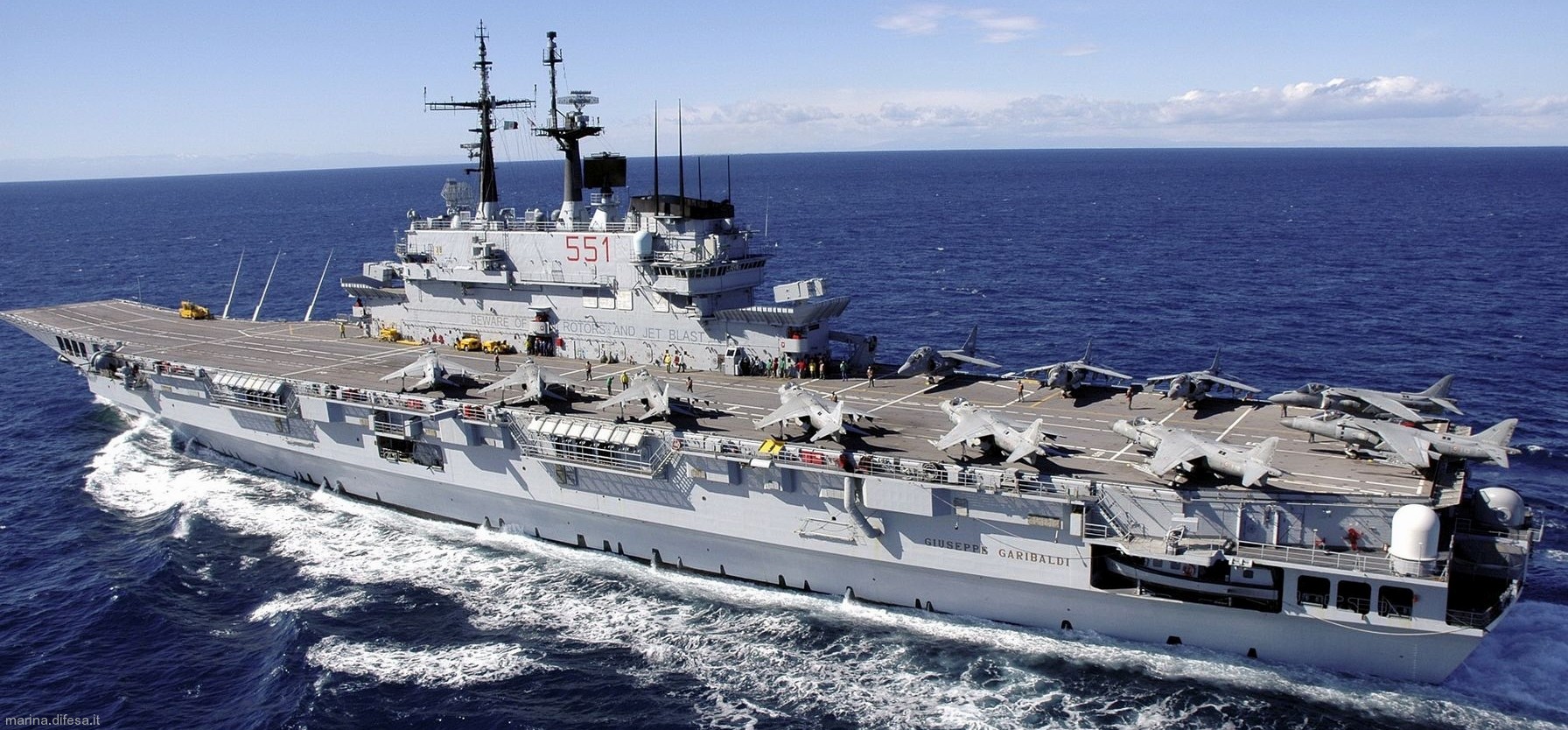
Designed as a gas turbine-powered helicopter carrier, the Giuseppe Garibaldi incorporates features suiting it for the carriage and operation of V/STOL fighters. The ship is named after Italian General Giuseppe Garibaldi.

The Garibaldi was designed specifically to provide ASW support for naval task forces and merchant convoys, and as such is fitted with full flagship facilities plus command, control and communication systems for both naval and air force operations. In emergencies it can also carry up to 600 troops for short periods. The extensive ωεɑρσռry fitted also allows it to operate as an independent surface unit. The carrier carries a bow-mounted active search sonar. To permit helicopter operations in heavy weather the vessel has been fitted out with two pairs of fin stabilizers, and the aircraft maintenance facilities are sufficient not only to service the ship’s own air group but also the light ASW helicopters of any escorting warships.

Commissioned in September 1985, the Garibaldi originally operated solely as an assault carrier with SH-3 and AB 212 helicopters embarked. After the Italian navy was given political clearance to operate fixed-winged types, AV-8Bs were acquired, although these have only been routinely embarked since December 1994. Under modernization, the OTOMAT Teseo Mk.2 anti-ship missile launchers were to be removed and replaced with SATCOM domes. It was planned that Aspine missiles will be replaced by Aster 15 missiles.
The Giuseppe Garibaldi was classified as a light aircraft carrier due to its smaller size and displacement compared to larger carriers. It was specifically designed and equipped with ASW capabilities to detect, track, and neutralize submarine threats to the task force it was assigned to.
To fulfill its ASW role, the Giuseppe Garibaldi was equipped with various systems and equipment such as:
- Anti-Submarine Helicopters: The carrier housed a complement of anti-submarine warfare helicopters, such as the AgustaWestland EH101 Merlin or the SH-3 Sea King. These helicopters were employed for detecting and engaging submarines using sonar systems, torpedoes, and other anti-submarine weapons.
- Sonar Systems: The Giuseppe Garibaldi was equipped with sonar systems to detect underwater threats. These sonar systems utilized passive and active sonar technology to detect and track submarines based on their acoustic signatures.
- Torpedo Countermeasures: The carrier likely had systems in place to defend against incoming torpedoes. This could include torpedo decoys or other countermeasures to divert or neutralize incoming threats.

The flight deck is 173.8 m long and 21 m wide, and is fitted with a 6.5° ski-jump ramp. The hangar is 110 m long, 15 m wide and 6 m high, and is built to accommodate 12 SH-3D or EH 101 anti-submarine ωɑɾʄɑɾε helicopters, or 10 AV-8B Harrier II close support aircraft and one SH-3D anti-submarine ωɑɾʄɑɾε helicopter, although the available height permits the embarkation of CH-47C helicopters if required. A maximum air wing comprising 18 helicopters (six on deck) or 16 AV-8Bs can be embarked. Two aircraft lifts are fitted (one forward and one abaft the island), and there are six marked flight deck spaces for helicopter operations. Currently a new Trieste amphibious assault ship is being built in Italy. It is planned to be commissioned in 2022. It will replace in service the Giuseppe Garibaldi. It will operate F-35B stealthy multi-role fighters as well as helicopters.






